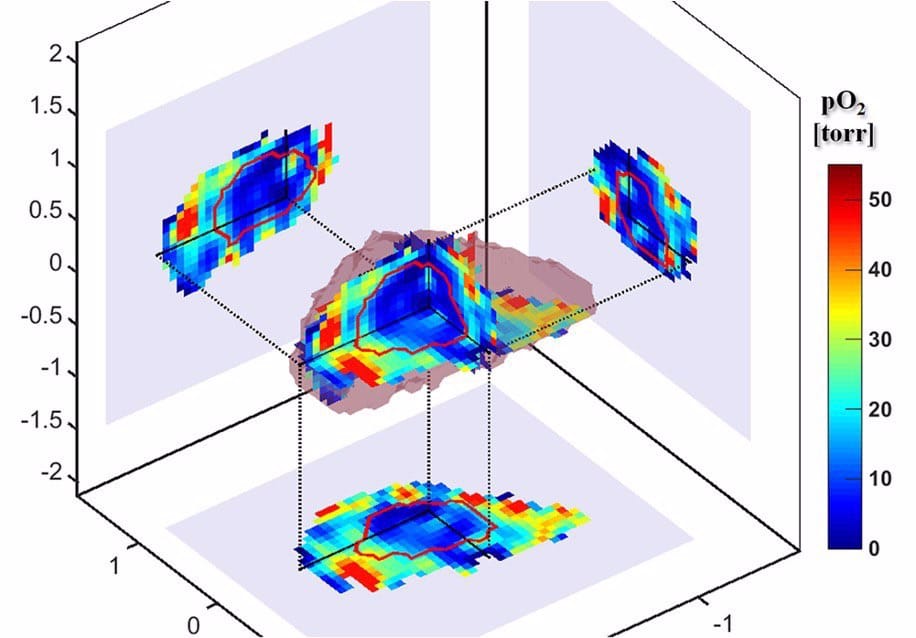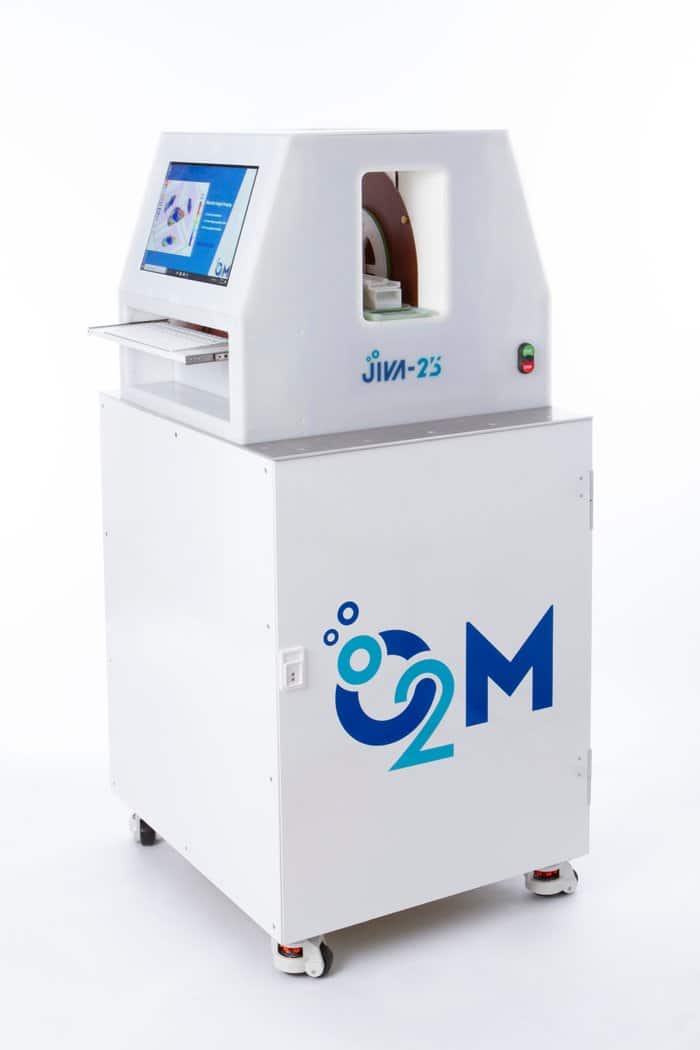Hypoxia severely limits the efficacy of radiotherapy, chemotherapy, and immunotherapy. This results in diminished success in treating cancer. Despite consistent research in this field and treatments with promising anti-hypoxia mechanisms, there is no treatment for ameliorating hypoxia.
Electron paramagnetic resonance oxygen imaging (EPROI) provides 3D oxygen maps of tissues at high resolution. At Duke University, JIVA-25 is currently being utilized in radiation biology applications, investigating a promising radiation sensitizer in the E0771 murine flank tumor model. Oxygen microbubbles are venously-introduced and burst in the tumor via ultrasound, providing a bolus of oxygen. In vivo pilot studies have shown an increase in hemoglobin saturation in murine tumor models; however, to fully elucidate the role of oxygen microbubbles in alleviating hypoxia and to determine the ideal timing of prospective radiotherapy, the increase in tissue pO2 must be directly quantified spatially and temporally. These described experiments, while focusing on the radiation biology field, will provide a preclinical imaging paradigm for quantifying hypoxia in vivo that is applicable to any research that requires precise evidence of tissue pO2.

JIVA-25, The Next Big Thing in Oxygen Imaging
O2M Technologies proudly presents JIVA-25, the world's first dedicated oxygen imager for preclinical research. JIVA-25 operates at 25 mT magnetic field and uses pulse electron paramagnetic resonance imaging methodologies such as inversion recovery electron spin echo (IRESE) and single point imaging (SPI) for superior oxygen images. JIVA-25 is a portable instrument with a small footprint and modest power requirements that can be installed in any laboratory or animal room.
JIVA-25 measures the relaxation maps of a water-soluble oxygen-reporting trityl molecule that distributes in tissues upon injection and converts them into oxygen images. Trityls (OX063 or its deuterated version OX071, also known as OX063-D24) are stable radicals with low toxicity, highly soluble in water, and can be administered systemically through iv injection or directly into the animal tissues. Multiple resonators with horizontal and vertical access are available for in vitro and in vivo small animal oxygen imaging.

